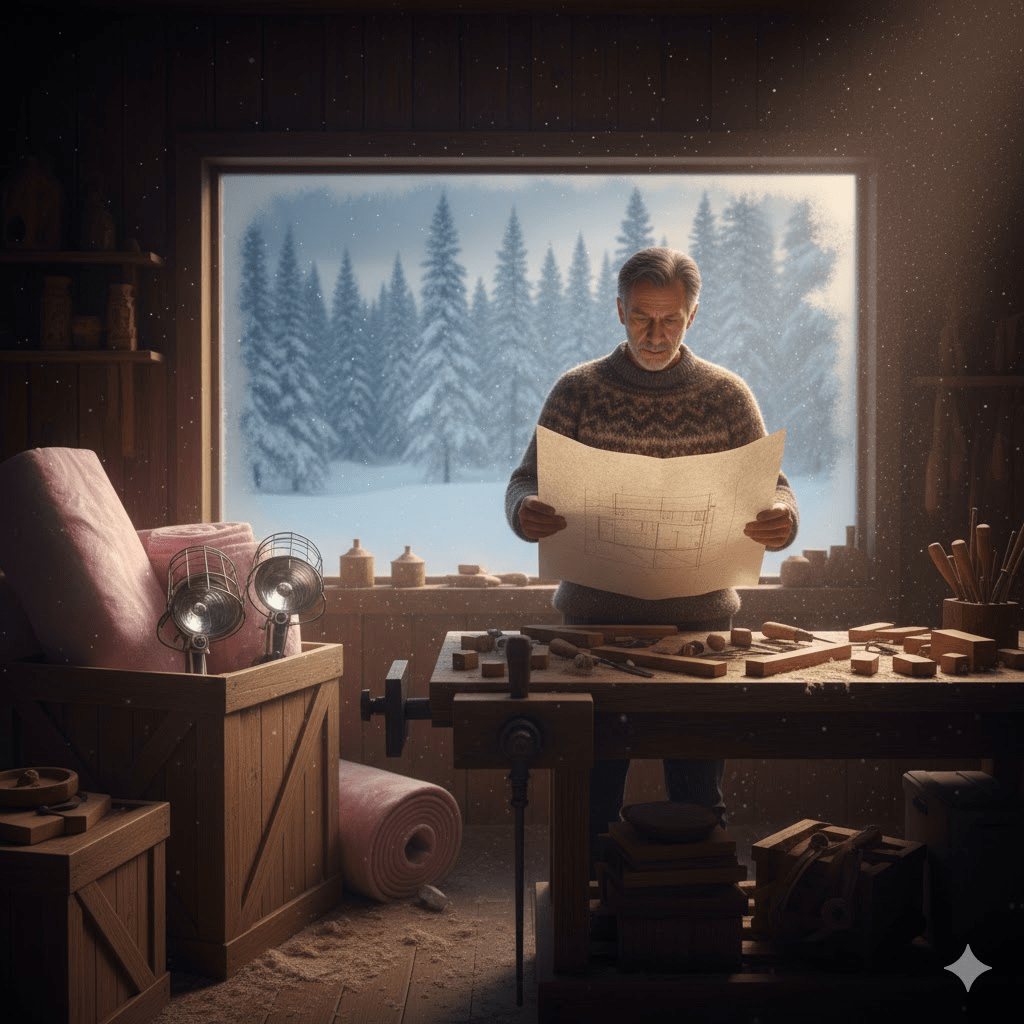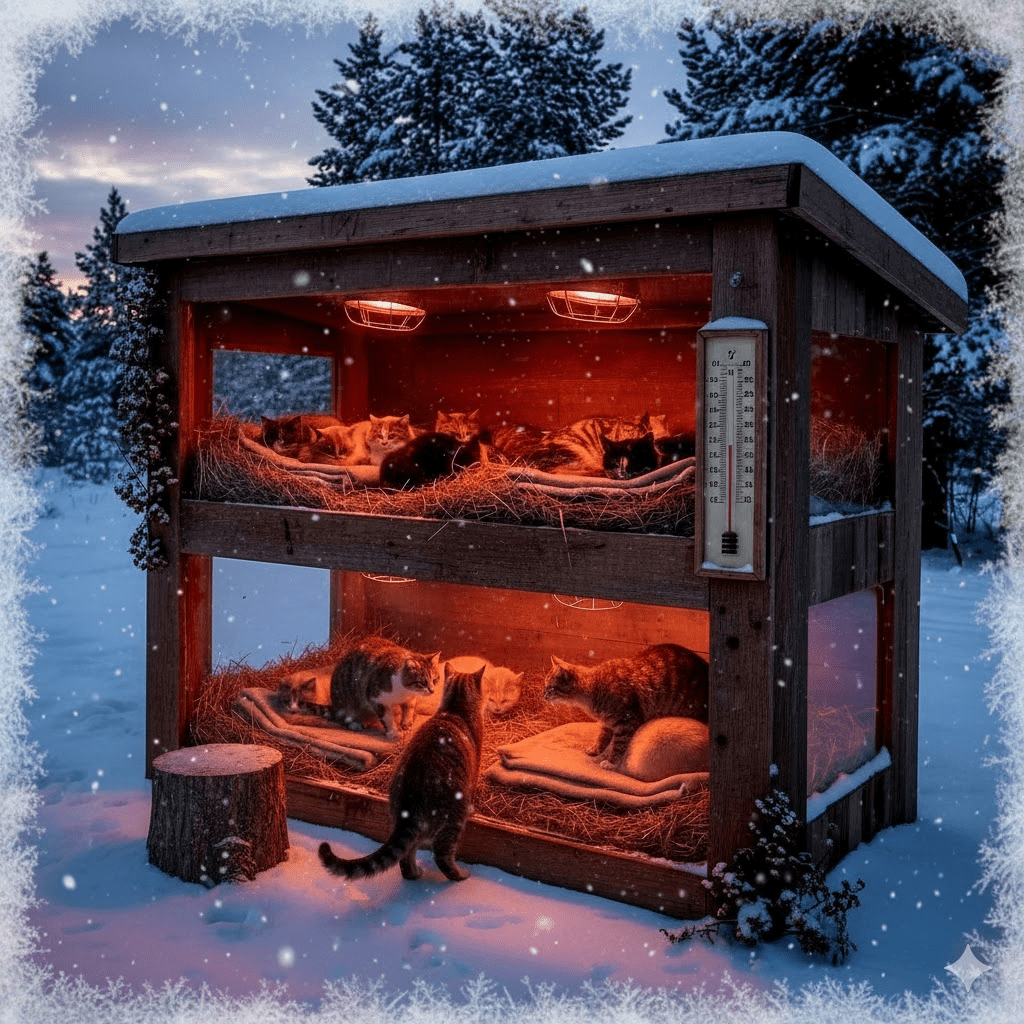The biting winds of the Alaskan winter are relentless, a harsh mistress that sculpts the landscape in ice and snow, testing the resilience of every living creature. For a colony of feral cats living on the fringes of civilization, each sunset brought with it the terrifying promise of another night battling sub-zero temperatures, their lean bodies shivering against the unforgiving cold. They were ghosts of the wilderness, wary of human contact, their instincts honed by a lifetime of survival. Yet, their silent struggle did not go unnoticed. John, a reclusive woodcarver living in a cabin nestled deep within the snow-laden pines, had watched them for weeks, their fleeting shadows against the pristine snow a poignant reminder of the fragility of life. His heart ached for them, especially on nights when the mercury plummeted to unthinkable lows.

He’d tried the conventional approach, leaving out bowls of warm milk and inviting them into the sanctuary of his heated home, but their fear was a barrier thicker than any ice wall. They would approach the food with a desperate hunger, darting away at the slightest movement, their wild eyes mirroring a distrust born of countless hardships. It was a stalemate, a silent plea met with an unyielding fear, and John knew he had to think differently, to bridge the chasm between their untamed existence and the warmth he so desperately wanted to offer.

The first twist came in the form of a forgotten blueprint. Tucked away in his workshop, amidst sawdust and wood shavings, John stumbled upon plans for a miniature cabin he had once envisioned for his grandchildren. A flicker of an idea sparked in his mind – what if he could adapt it? Not for children, but for creatures even more vulnerable. He spent the next few days sketching, calculating, and then, with a renewed sense of purpose, began to gather materials. His neighbors, accustomed to John’s solitary existence, watched with curiosity as planks of wood, insulation, and even small heating lamps were delivered to his remote cabin. Whispers circulated, wondering if John was finally building that guest house he’d always talked about, or perhaps expanding his workshop. No one suspected the true, heartwarming intent behind his sudden burst of construction.

The construction itself was another challenge. John, a skilled woodworker, found himself contending not just with the intricate details of a self-contained structure, but also with the persistent Alaskan weather. A sudden, violent snowstorm descended mid-project, burying his partially finished work under several feet of snow. For a moment, despair threatened to overwhelm him. The cats were still outside, battling the elements, and his grand plan seemed doomed. However, a quiet resilience, forged by years of living in the Alaskan wilderness, kicked in. He spent arduous hours digging out the structure, his hands numb with cold, his spirit fueled by the image of the shivering felines. It was during this digging that he made a crucial discovery: the storm had inadvertently created a sheltered snowdrift that could be integrated into the design, offering an additional layer of natural insulation. What seemed like a setback became an unexpected advantage, a small victory in his personal crusade against the cold.

The finished shelter was a marvel of rustic engineering: a two-tiered wooden structure, insulated against the frigid air, equipped with low-wattage heating lamps that cast a warm, inviting glow. Inside, soft hay beds awaited, promising respite from the harsh ground. John carefully placed bowls of fresh water and dry kibble. But the biggest challenge still remained: convincing the wary cats to trust this strange, new edifice. For the first few nights, they approached cautiously, sniffing the air, their instincts screaming danger. They ate the food left outside the shelter but refused to enter. John watched from his window, a knot of anxiety in his stomach. Had all his effort been for naught?

One particularly brutal night, with the wind howling like a banshee and temperatures plummeting to dangerous levels, John witnessed the breakthrough. A tiny, emaciated tabby, the smallest of the group, driven by desperation and the sheer force of the cold, made a tentative step. It hesitated, then, with a burst of courage, darted inside the lower level. Moments later, its shivering ceased. The warmth was a revelation, a comfort it had never known. The other cats, observing from a distance, saw its relaxed posture, its eyes slowly closing in peace. One by one, hesitantly at first, then with increasing confidence, they followed. The sight brought tears to John’s eyes. His makeshift sanctuary had found its inhabitants.






